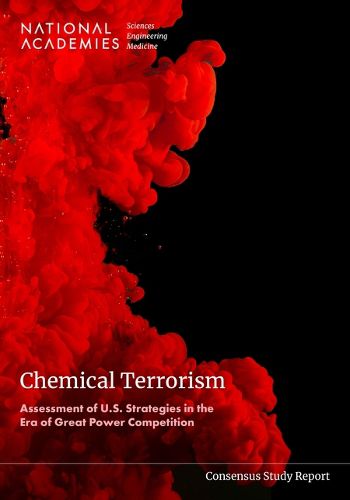Readings Newsletter
Become a Readings Member to make your shopping experience even easier.
Sign in or sign up for free!
You’re not far away from qualifying for FREE standard shipping within Australia
You’ve qualified for FREE standard shipping within Australia
The cart is loading…






Domestic and foreign violent extremist organizations, or terrorist groups, have caused a greater amount of harm with chemical agents than with biological or radiological weapons. The United States capacity and capability to identify, prevent, counter, and respond adequately to chemical threats is established by the strategies, policies, and laws enacted across multiple levels of government. While the number of chemical terrorism incidents has risen and fallen over time, there is no empirical or analytical indication that the threat is disappearing. This report comes at a time when the nation's highest-level strategies have shifted from focusing primarily on violent extremist organizations to focusing more on Great Power Competition. This shift in relative perceived threat and consequent prioritization will impact efforts against chemical terrorism, and in turn, affect funding priorities. Revised risk assessments are needed to reprioritize risks guided by new strategies, so that strategy-aligned budgets can be created. The report recommends weapons of mass destruction budgets be aligned with evolving priorities and incentivize activities that transition promising research to operations.
Table of Contents
Front Matter Summary 1 Introduction 2 Chemical Threats and U.S. Governmental and Nongovernmental Institutions That Play a Role (The Threat and the Who's Who) 3 Evaluation of Strategies 4 Adequacy of Strategies to Identify Chemical Threats 5 Adequacy of Strategies to Prevent and Counter Chemical Terrorism 6 Adequacy of Strategies to Respond to Chemical Terrorism 7 Chemical Terrorism in the Era of Great Power Competition: Cross-Cutting Findings, Conclusions, Recommendations Appendix A: U.S. Government Strategies and Other Documents Considered Appendix B: Acronym/Initialism List Appendix C: Committee Biographies Appendix D: Strategy Assessment Rubric Appendix E: International Case Studies Appendix F: Threats Interdicted Case Studies Appendix G: Threats Manifested Case Studies
$9.00 standard shipping within Australia
FREE standard shipping within Australia for orders over $100.00
Express & International shipping calculated at checkout
Domestic and foreign violent extremist organizations, or terrorist groups, have caused a greater amount of harm with chemical agents than with biological or radiological weapons. The United States capacity and capability to identify, prevent, counter, and respond adequately to chemical threats is established by the strategies, policies, and laws enacted across multiple levels of government. While the number of chemical terrorism incidents has risen and fallen over time, there is no empirical or analytical indication that the threat is disappearing. This report comes at a time when the nation's highest-level strategies have shifted from focusing primarily on violent extremist organizations to focusing more on Great Power Competition. This shift in relative perceived threat and consequent prioritization will impact efforts against chemical terrorism, and in turn, affect funding priorities. Revised risk assessments are needed to reprioritize risks guided by new strategies, so that strategy-aligned budgets can be created. The report recommends weapons of mass destruction budgets be aligned with evolving priorities and incentivize activities that transition promising research to operations.
Table of Contents
Front Matter Summary 1 Introduction 2 Chemical Threats and U.S. Governmental and Nongovernmental Institutions That Play a Role (The Threat and the Who's Who) 3 Evaluation of Strategies 4 Adequacy of Strategies to Identify Chemical Threats 5 Adequacy of Strategies to Prevent and Counter Chemical Terrorism 6 Adequacy of Strategies to Respond to Chemical Terrorism 7 Chemical Terrorism in the Era of Great Power Competition: Cross-Cutting Findings, Conclusions, Recommendations Appendix A: U.S. Government Strategies and Other Documents Considered Appendix B: Acronym/Initialism List Appendix C: Committee Biographies Appendix D: Strategy Assessment Rubric Appendix E: International Case Studies Appendix F: Threats Interdicted Case Studies Appendix G: Threats Manifested Case Studies